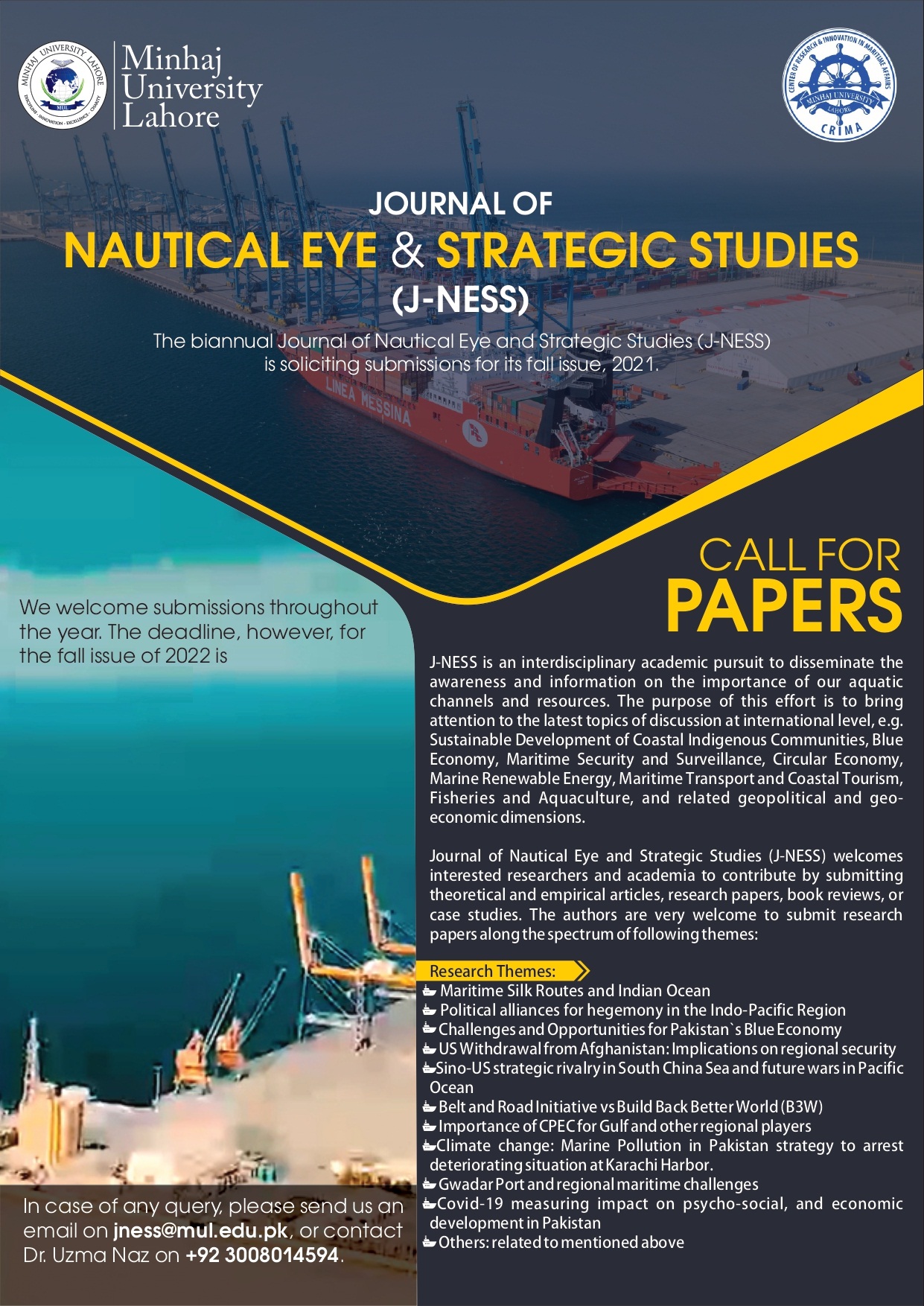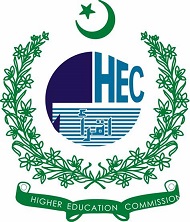Fish as a Healthy Source of Human Nutrition: An Exploratory Study
DOI:
https://doi.org/10.58932/MULG0030Keywords:
Fish, Seafood, Nutrition, Benefits, Human HealthAbstract
This study posits that fishery industry has an important role in the global economy and is performing two functions – economic development and food production. The production of fish primarily occurs through two main methods: capture fishing, where commercial exploitation of the wild stocks occurs; and culture fishery, which is known as aquaculture and is the process of fish breeding in a controlled environment. One of the broadest classifications for fish are finfish and shellfish; the latter provide many vital nutrients and play an important role in global food security. Fish is the main source of food with high nutritional value that has an abundance of high-quality protein, amino acids, vitamins, and minerals yet is a low-fat food. On top of that, it has proved to be a great choice for those that want to remain in the healthy weight category as well as those that are in the process of shedding their excess weight. The protein contained in fish is highly absorbable and comes with good amounts of both essential and non-essential amino acids that are critically needed for the body's well-being. This study is having an exploratory to present the data combined with observations and facts based on content analysis.
References
Aguero, M. N., & Costello, G. (1989). Constraints to the development of effective fisheries management in the LDCs: implications for training and research. Proceedings of the International Conference on Fisheries . University of Quebec at Rimouski. Retrieved from https://horizon.documentation.ird.fr/exl-doc/pleins_textes/pleins_textes_6/colloques2/36729.pdf
Alberts, B., Johnson, A., Lewis, J., Raff, M., Roberts, K., & Walter, P. (n.d.). How Cells Obtain Energy from Food. Retrieved 5 9, 2024, from https://www.ncbi.nlm.nih.gov/books/NBK26882/
Alder, J., Campbell, B., Karpouzi, V., Kaschner, K., & Pauly, D. (2008). Fishmeal and fish oil: production trade and consumption. The Annual Review of Environment and Resources, 33(2), 153-66. https://doi.org/10.1146/annurev.environ.33.020807.143204
Allen, L., Benoist, B. d., Dary, O., & Hurrell, R. (Eds.). (2006). Guidelines on food fortification with micronutrients. WHO. Retrieved 5 9, 2024, from www.who.int/nutrition/publications/guide_food_fortification_micronutrients.pdf
animals.com. (2023). Puffer Fish. Retrieved 5 9, 2024, from animals.com: https://a-z-animals.com/animals/puffer-fish/
Beddington, J. R., & Rettig, B. (1983). Approaches to the regulation of the fishing effort. FAO, Fisheries Technical Paper .
Béné, C. (2009). Governance and decentralization reforms in small-scale fisheries: an African perspective. In In: Fisheries, sustainability and development. Royal Swedish Academy. Retrieved from http://eprints.cmfri.org.in/9082/1/20.RNK_Tradeoffs_in_Fisheries.pdf
Bogard, J. R., Thilsted, S. H., Marks, G. C., Wahab, M. A., Hossain, M. A., Jakobsen, J., & Stangoulis, J. (2015). Nutrient composition of important fish species in Bangladesh and potential contribution to recommended nutrient intakes. Journal of Food Composition and Analysis, 42, 120-133. https://doi.org/10.1016/j.jfca.2015.03.002
Byrd, K. A., Thilsted, S. H., & Fiorella, K. J. (2020). Fish nutrient composition: a review of global data from poorly assessed inland and marine species. Public Health Nutrition, 24(3), 476–486. https://doi.org/10.1017/S1368980020003857
Canadian Food Inspection Agency. (2021). Seafood* (Fish, Crustaceans and Shellfish) – One of the nine most common food allergens. Retrieved 5 9, 2024, from Canadian Food Inspection Agency: http://www.inspection.gc.ca/english/fssa/labeti/allerg/fispoie.shtml
Clark RF, W. S. (1999). A review of selected seafood poisonings. Undersea Hyperb Med, 26(3), 175–84. Retrieved 5 9, 2024, from http://archive.rubicon-foundation.org/2314
Craig, W. J. (2009). Health effects of vegan diets. The American Journal of Clinical Nutrition, 89(5), 1627-1633. Retrieved 5 9, 2024, from https://academic.oup.com/ajcn/article/89/5/1627s/4596952
DA, G. (1998). Scombroid fish poisoning: successful treatment with cimetidine. Undersea Hyperb Med, 25(2), 123–5. Retrieved 5 9, 2024, from http://archive.rubicon-foundation.org/2294
Eslick, G. D., Eslick, G. D., Howe, P. R., Smith, C. A., Priest, R., & Bensoussan, A. (2009). Benefits of fish oil supplementation in hyperlipidemia: a systematic review and meta-analysis. International Journal of Cardiology, 136(1), 4-16. Retrieved 5 9, 2024, from https://ncbi.nlm.nih.gov/pubmed/18774613
FAO. (2018). In brief, The State of World Fisheries and Aquaculture, 2018. FAO. Retrieved 5 9, 2024, from http://www.fao.org/3/ca0191en/ca0191en.pdf
Harris, W. S., Appel, L. J., & Kris-Etherton, P. M. (2002). Fish Consumption, Fish Oil, Omega-3 Fatty Acids, and Cardiovascular Disease. Circulation, 106(21), 2747–2757. Retrieved 5 9, 2024, from http://circ.ahajournals.org/cgi/content/full/106/21/2747
Key, T. J., Fraser, G. E., Thorogood, M., Appleby, P. N., Beral, V., Reeves, G., . . . McPherson, K. (2020). Mortality in vegetarians and non-vegetarians: detailed findings from a collaborative analysis of 5 prospective studies. American Journal of Clinical Nutrition, 70(3), 516S–524S. Retrieved 5 9, 2024, from http://www.ajcn.org/cgi/content/full/70/3/516S
Khan, M. W. (2006). Review of the state of world marine capture fisheries management: Indian Ocean. Retrieved from Country review: Pakistan: http://www.fao.org/
Lee, J. H., O'Keefe, J. H., Lavie, C. J., Marchioli, R., & Harris, W. S. (2008). Omega-3 Fatty Acids for Cardioprotection. Retrieved 5 9, 2024, from https://mayoclinicproceedings.org/article/s0025-6196(11)60866-5/fulltext
Longhurst, A. (2010). Mismanagement of Marine Fisheries (1 ed.). Cambridge University Press.
MacLean, C. H., Newberry, S., Mojica, W., Khanna, P. P., Issa, A. M., Suttorp, M. J., . . . Morton, S. C. (2006). Effects of Omega-3 Fatty Acids on Cancer Risk: A Systematic Review. JAMA, 295(4), 403-415. Retrieved 5 9, 2024, from https://jamanetwork.com/journals/jama/article-abstract/202260
Mares, J. A., Rowe, T. L., & Blodi, B. A. (2004). Doctor, What Vitamins Should I Take for My Eyes? Archives of Ophthalmology, 122(4), 628-635. Retrieved 5 9, 2024, from https://jamanetwork.com/journals/jamaophthalmology/fullarticle/416259
Maroon, J. C., & Bost, J. (2006). ω-3 Fatty acids (fish oil) as an anti-inflammatory: an alternative to nonsteroidal anti-inflammatory drugs for discogenic pain. Surgical Neurology, 65(4), 326-331. Retrieved 5 9, 2024, from https://ncbi.nlm.nih.gov/pubmed/16531187
Meyer-Rochow, V. B., & Meyer-Rochow, V. B. (2009). Food taboos: their origins and purposes. Journal of Ethnobiology and Ethnomedicine, 5(1), 18-18. Retrieved 5 9, 2024, from https://ncbi.nlm.nih.gov/pmc/articles/pmc2711054
Mishra, S. P. (2020). Significance of fish nutrients for human health. International Journal of Fisheries and Aquatic Research, 5(3), 47-49. Retrieved from http://www.fishjournals.com/
Mohsin, M., Yong-tong, M., Hussain, K., Mahmood, A., Zhaoqun, S., Nazir, K., & Wei, W. (2015). Contribution of Fish Production and Trade to the Economy of Pakistan. The international journal of marine science, 5. Retrieved 2 26, 2024, from http://biopublisher.ca/index.php/ijms/article/view/1689
Mori, T. A. (2006). Omega-3 fatty acids and hypertension in humans. Clinical and Experimental Pharmacology and Physiology, 33(9), 842-846. Retrieved 5 9, 2024, from https://onlinelibrary.wiley.com/doi/abs/10.1111/j.1440-1681.2006.04451.x
Mozaffarian, D., & Rimm, E. B. (2006). Fish Intake, Contaminants, and Human Health: Evaluating the Risks and the
Benefits. JAMA, 296(15), 1885-1899. Retrieved 5 9, 2024, from https://ncbi.nlm.nih.gov/pubmed/17047219
Muir, W. M. (2004). The threats and benefits of GM fish. EMBO Reports, 5(7), 654-659. Retrieved 5 9, 2024, from https://ncbi.nlm.nih.gov/pmc/articles/pmc1299107
Müller, O., & Krawinkel, M. B. (2005). Malnutrition and health in developing countries. Canadian Medical Association Journal, 173(3), 279-286. Retrieved 5 9, 2024, from https://ncbi.nlm.nih.gov/pmc/articles/pmc1180662
Picciano, M. F. (2003). Pregnancy and Lactation: Physiological Adjustments, Nutritional Requirements and the Role of Dietary Supplements. Journal of Nutrition, 133(6). Retrieved 5 9, 2024, from https://academic.oup.com/jn/article/133/6/1997s/4688112
Rønnestad, I., Thorsen, A., & Finn, R. N. (1999). Fish larval nutrition: a review of recent advances in the roles of amino acids. Aquaculture, 177(1999), 201-216.
Ross, C. M. (2005). Fish Oil versus Cod Liver Oil: Is Vitamin D a Reason to Go Back to the Future. Journal of The American Board of Family Practice, 18(5), 445-446. Retrieved 5 9, 2024, from https://jabfm.org/content/18/5/445.1
Saldeen, P., & Saldeen, T. (2004). Women and omega-3 fatty acids. Obstetrical & Gynecological Survey, 59(10), 722-730. Retrieved 5 9, 2024, from https://ncbi.nlm.nih.gov/pubmed/15385858
Sann, A. (1998). A livelihood from fisheries: globalization and sustainable fisheries policies. Intermediate Technology Publications. Retrieved from cabdirect.org
Shahzad, S. M. (2022, December 31). Marine Life & Fish Management an Effective Tool of Blue Economy of Pakistan. Advancements in Life Sciences, 9(4), 453-457. Retrieved from http://www.als-journal.com/articles/vol9issue4/9410.22/1540.pdf
Swanson, D., Block, R. C., Mousa, S. A., & Mousa, S. A. (2012). Omega-3 Fatty Acids EPA and DHA: Health Benefits Throughout Life. Advances in Nutrition, 3(1), 1-7. Retrieved 5 9, 2024, from https://ncbi.nlm.nih.gov/pmc/articles/pmc3262608
Thorpe, A., Ibarra, A. A., & Reid, C. (2000). The new economic model and marine fisheries development in Latin America. World development, 1689 – 1703. Retrieved from https://citeseerx.ist.psu.edu/document?repid=rep1&type=pdf&doi=a3a586e7c5ba2896e8a47705b46764b3ba508966
Tilamia, S. K., & Sampels, S. (2018). Nutritional Value of Fish: Lipids, Proteins, Vitamins, and Minerals. REVIEWS IN FISHERIES SCIENCE & AQUACULTURE, 26(2), 243–253. https://doi.org/10.1080/23308249.2017.1399104
Torpy, J. M., Lynm, C., & Glass, R. M. (2006). Eating Fish: Health Benefits and Risks. JAMA, 296(15), 1926-1926. Retrieved 5 9, 2024, from https://jamanetwork.com/journals/jama/fullarticle/203693
United States Department of Agriculture. (2013). Nutrient data for 15067, Fish, pollock, walleye, cooked, dry heat. Retrieved 5 9, 2024, from http://ndb.nal.usda.gov/ndb/foods/show/4510
Vince, G. (2012). BBC - Future - How the world's oceans could be running out of fish. Retrieved 5 9, 2024, from BBC: http://www.bbc.com/future/story/20120920-are-we-running-out-of-fish
Wijesundera, C., Kitessa, S. M., Abeywardena, M. Y., Bignell, W., & Nichols, P. D. (2011). Long-chain omega-3 oils: Current and future supplies, food and feed applications, and stability. Lipid Technology, 23(3), 55-58. Retrieved 5 9, 2024, from http://onlinelibrary.wiley.com/doi/10.1002/lite.201100091/abstract
Young, E. (2001). tate intervention and abuse of the commons: fisheries development in Baja California Sur, Mexico. Annals of the Association of American Geographers, 91(2), 122 – 142. Retrieved from https://www.tandfonline.com/doi/pdf/10.1111/0004-5608.00244
Downloads
Published
How to Cite
Issue
Section
License
Copyright (c) 2024 Journal of Nautical Eye and Strategic Studies

This work is licensed under a Creative Commons Attribution-NonCommercial 4.0 International License.










